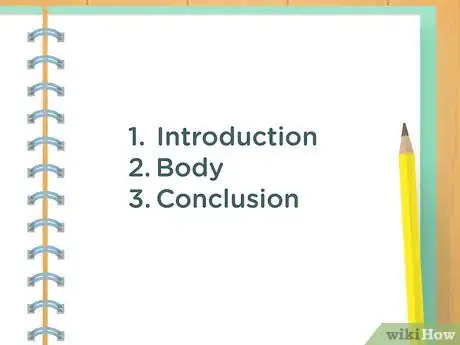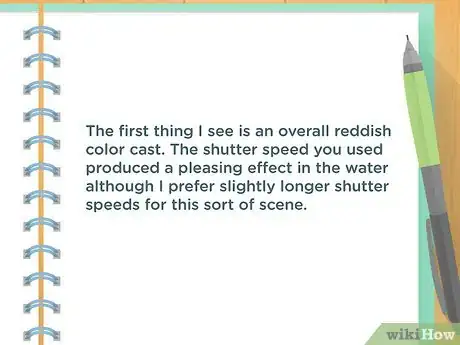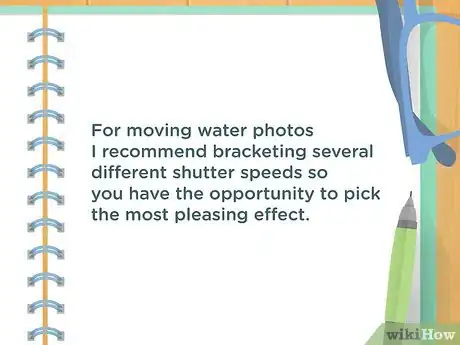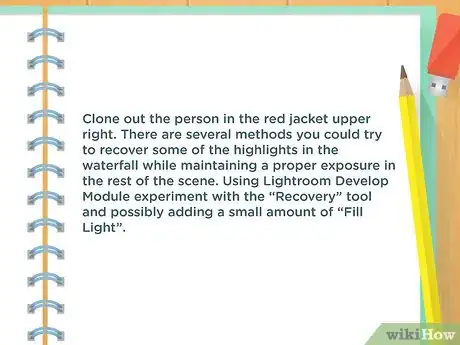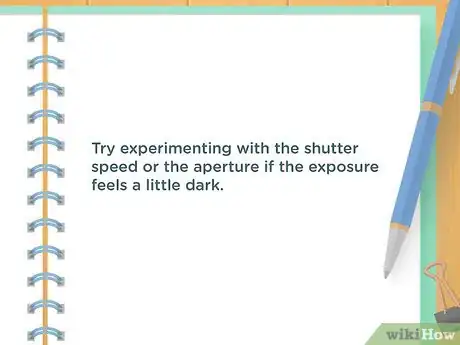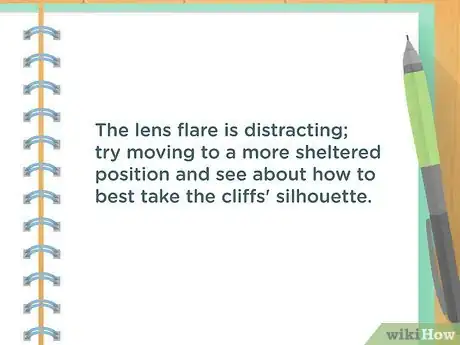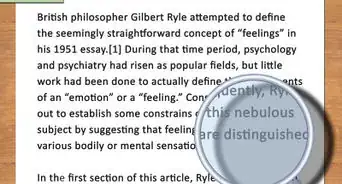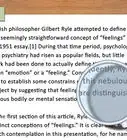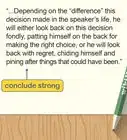This article was co-authored by Karen De Jager. Karen De Jager is a Professional Photographer and the Owner of Spectrum Photography LLC, operating in the broader East Bay area based in Pleasant Hill, California. Karen is a published and award-winning photographer who offers both in-studio, outdoor, and on-location sessions specializing in capturing a wide variety of special moments and events in a natural, photojournalistic style. Her ability to look at every photoshoot as an adventure and general passion for delivering excellent customer service led to Spectrum Photography’s recognition by Expertise.com as the “Best Wedding Photographers in Vallejo” in both 2018 and 2020.
There are 17 references cited in this article, which can be found at the bottom of the page.
wikiHow marks an article as reader-approved once it receives enough positive feedback. In this case, 87% of readers who voted found the article helpful, earning it our reader-approved status.
This article has been viewed 194,059 times.
Critiques can guide budding and seasoned artists alike as refine their work. Writing a critique involves evaluating the image's technical and compositional elements. Analyze how the different elements work together and suggest ways for the photographer to improve. Keep your tone agreeable but constructive, and offer advice beyond personal like or dislike of the image. With a little structure and thorough analysis, you can write critiques that help the photographer learn and grow.
Steps
Formatting Critiques
-
1Outline your critique before you write it. Take notes on your initial thoughts and suggestions while looking at the photograph.. Make a list of key points and list them in the order you want to present them. Include details near your talking points to expand upon in the critique. Refer to your outline as you write to maintain organization.
-
2Structure the critique into an introduction, body, and conclusion. Organized critiques will give the photographer a clear understanding of your perspective. Begin with a paragraph introducing your standpoint and overall impressions. Then, use the body to expand upon your thoughts and offer more specific advice. Close with a final paragraph, where you can give a summary of your thoughts.[1]
- Write your introduction after you've written the body so you know what to summarize.
Advertisement -
3State what you think works well first. Before you dive into criticisms, write a paragraph or two about what you thought the photographer went well. Critiques don't have to be entirely negative. Writing about elements you thought worked can help the photographer improve, too.[2]
- Writing your positive thoughts first can make the photographer more open to negative opinions.
-
4
-
5Include recommendations for improvement. Critiques are different from general reviews in that they include guidance for the photographer's future revisions. Never give an opinion without following up with suggestions for change. One to two sentences is usually sufficient.[5]
Evaluating Technical Components
-
1Assess the exposure. When photographers shoot photos in an unflattering exposure setting, the lighting and contrast may look washed out. Determine whether the exposure makes the subject seem faded out or muddled. Recommend a different exposure setting if so.[6]
- Suggest that the photographer experiment with aperture or shutter speed if the exposure seems off.
-
2Check the photo's focus. Study it for unintentional blurriness. After evaluating potential camera errors, analyze the photo's subject. Is the focal point ideal for the picture, or could the artist have chosen a different angle? Offer advice for the photographer if the focus is obscured or misguided.[7]
- Landscape photos often look best in sharp focus. Soft backgrounds with a focal point on the subject works well in portrait photography.
-
3Comment on the focal length. Focal length involves how close or far away the subject seems, or how close together the subjects seem. If the photo seems squished together or excessively spaced apart, the focal length might not complement the photo. Offer suggestions to retake the photo with various focal lengths.[8]
-
4Look for dust, glare, or other errors. Unwanted dust or lens glare can ruin an otherwise well-taken photo. Recommend that the photographer clean their lens or pay more attention to light sources. A sentence or two about either should suffice, with the majority of the critique focused on more overarching elements.
Analyzing Composition
-
1Write about the shot's composition. Study the angling of the shot and what the photographer decided to include. While assessing the photograph's quality, look for any elements that detract from everything else. Point out anything that seems awkward, backgrounds that stand out too much, or technical errors that distract from the subject.[9] [10]
-
2Observe the photo's visual weight. When you first look at the photograph, write down where your eyes go first. Compare this with what the most intriguing part of the photo is. If these two areas don't match up, write down ways for the photographer to create intriguing visual weight.
- Visual weight can be improved by introducing contrast, focusing on eye-catching colors, and changing the picture's angle.[11]
-
3Study the photo's color. Some subjects might look better with warmer tones, while others naturally thrive with a cool tone. Others still could benefit from a black-and-white or sepia filters. Look at the photo's color, and offer suggestions to make the tone look more natural. Advise the photographer to avoid artificial light, take photos without flash, or try out different filters.[12]
-
4Examine the background. Backgrounds can either highlight the subject or greatly detract from the overall picture. Ask yourself if the background is too busy, if it makes the subject look dull, or if it is too focused/out-of-focus.[13] Provide suggestions for alternative backgrounds if the current one doesn't work.[14]
Maintaining a Constructive Tone
-
1Critique the same way you would want to be critiqued. Remember the Golden Rule, which is, of course, treat others how you would want to be treated. Simple comments (e.g. "Good job!") or insults (e.g. "Your photograph is garbage") will not help the photographer. If you were receiving a critique, you would probably want the writer to be thorough and fair. Extend this artist the same respect.[15]
-
2Explain why you like or dislike an element. Avoid one-word or one-sentence critiques. Writing to the photographer about how much you enjoyed the picture is flattering but won't teach them anything. Positive and negative comments are equally welcome in a critique, but without explanation, they lack value.
- Photographers will listen to negative comments more intently if backed up with commentary.
- Instead of, "I love this duckling picture!," you might say, "The ducklings make a strong focal point, and softening the background allowed their colors to pop."
-
3Look at the photo as objectively as you can. If you know (or are) the person who took this photo, you may come into the photo with a bias. Put aside all personal emotions that could color the lens with which you see this photo. Avoid snap judgments: look at the photo for at least 5-10 minutes before composing your critique.[16]
-
4Reframe blunt passages. Read over your critique and look for overly-emotional or unkind phrases. Take out judgments (like "stupid" or "unprofessional") and state facts. Try to keep from using "you" or "your," which can make the photographer feel personally attacked.
- Instead of, "Your exposure looked terrible," for example, you could say, "The picture could benefit from a faster shutter speed setting."[17]
-
5Avoid mixing technique with personal opinion. Sometimes a photograph might look professionally well-done but conflict with your personal taste. Recognize whether you're critiquing a technical error or expressing your aesthetic taste. Put your focus on the former to avoid discouraging the photographer's style.
Expert Q&A
-
QuestionHow do you evaluate your own photography?
 Karen De JagerKaren De Jager is a Professional Photographer and the Owner of Spectrum Photography LLC, operating in the broader East Bay area based in Pleasant Hill, California. Karen is a published and award-winning photographer who offers both in-studio, outdoor, and on-location sessions specializing in capturing a wide variety of special moments and events in a natural, photojournalistic style. Her ability to look at every photoshoot as an adventure and general passion for delivering excellent customer service led to Spectrum Photography’s recognition by Expertise.com as the “Best Wedding Photographers in Vallejo” in both 2018 and 2020.
Karen De JagerKaren De Jager is a Professional Photographer and the Owner of Spectrum Photography LLC, operating in the broader East Bay area based in Pleasant Hill, California. Karen is a published and award-winning photographer who offers both in-studio, outdoor, and on-location sessions specializing in capturing a wide variety of special moments and events in a natural, photojournalistic style. Her ability to look at every photoshoot as an adventure and general passion for delivering excellent customer service led to Spectrum Photography’s recognition by Expertise.com as the “Best Wedding Photographers in Vallejo” in both 2018 and 2020.
Professional Photographer Ask yourself if there's clean space around the subject and if there are any distracting elements that should be removed. Also, consider the overall feeling of the photo, and if your subject has something that will not be there by the time you deliver the images (like a pimple).
Ask yourself if there's clean space around the subject and if there are any distracting elements that should be removed. Also, consider the overall feeling of the photo, and if your subject has something that will not be there by the time you deliver the images (like a pimple).
References
- ↑ http://www.citewrite.qut.edu.au/write/critique.jsp
- ↑ http://www.creative-writing-now.com/how-to-write-a-critique.html
- ↑ https://www.hws.edu/academics/ctl/pdf/critique.pdf
- ↑ https://grants.nih.gov/grants/policy/review/rev_prep/critiques.htm
- ↑ https://student.unsw.edu.au/structure-critical-review
- ↑ http://clickitupanotch.com/2016/03/how-to-critique-a-photograph/
- ↑ http://www.makeuseof.com/tag/brief-guide-to-critiquing-your-own-photos/
- ↑ https://www.youtube.com/watch?v=t3A3SnPFPk0
- ↑ http://www.apogeephoto.com/critiquing-your-photographs/
- ↑ Karen De Jager. Professional Photographer. Expert Interview. 18 March 2021.
- ↑ http://www.ultimate-photo-tips.com/photography-rules-of_composition.html
- ↑ https://expertphotography.com/10-ways-to-critique-a-photo/
- ↑ Karen De Jager. Professional Photographer. Expert Interview. 18 March 2021.
- ↑ http://www.the-digital-picture.com/Photography-Tips/backgrounds.aspx
- ↑ http://erickimphotography.com/blog/2012/07/02/how-to-give-a-constructive-critique-in-street-photography/
- ↑ https://photographylife.com/how-to-critique-your-photos-accurately
- ↑ https://psychologyforphotographers.com/a-crash-course-in-the-art-of-constructive-critique
- ↑ https://teaching.temple.edu/sites/tlc/files/resource/pdf/5_Best_Practices_for_Critiques%20%5BAccessible%5D_0.pdf

